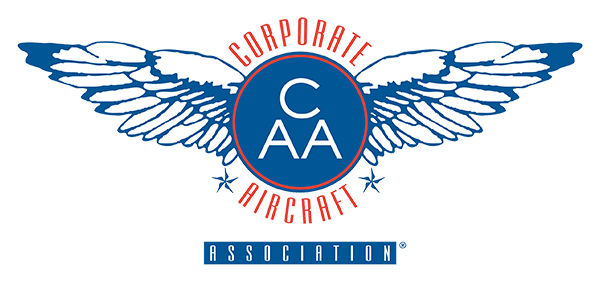Results 1 to 6 of 6
-
02-15-2023, 11:33 AM
 #1
#1
Condensation Icing on Ground
I am employed as a pilot for a company located in St. George Utah that operates an Eclipse 500 and a Phenom 300 under Part 91. I experienced something I have never seen before and am looking for insight as to understanding the phenomenon for future safety of flight concerns. Upon completing a Part 91 corporate flight in an Eclipse 500 on 2/14/23 and exiting the aircraft at KSGU after shutdown, ice and frost were present (may have still been forming) on the upper surface of the wings. To the best of my knowledge, the ice and frost were not present in flight based on visual inspections I constantly conducted during the duration of the flight due to the potential icing conditions.
It should also be noted that the ice and frost formation had distinct boundaries on the wing surface, which I assume correlates with the location of the fuel tank- ice and frost formed where fuel was present and did not where fuel was not present.
The following photos show the ice and snow accumulation on the right wing- both wings showed similar conditions:
The following are the weather and flight conditions leading up to the above scenario:
Leg 1: KSGU to KSLC
· Departure Time: 11:30 am Local (MST)
· Conditions at departure: Wind- 280@3, Vis-10, Sky- Bkn 4600, OVC 6000, Temp-8 Dew-0, Alt-29,59.
· On climb out, light rime icing was encountered between 9000-12,000 msl. Tops were 20,000. Light to moderate turbulence. All deicing systems activated except windshield heat. Any ice build up was eliminated from the leading edge except for some minimal residual after boot inflation.
· Cruise was at 27,000. OAT was shown as -55 C (around ISA -15)
· Landing in SLC at approx.12:30 MST
· Reported conditions on landing: Wind-300@11, Vis-10, Few 3300, Sct 5000, OVC 13,000, Temp 0 Dew -11, Alt 29.66.
On Ground in SLC
· Landed with 800 lbs of fuel
· No ice accumulation was present at any time on the ground after landing or before takeoff in SLC
· 84 gallons of fuel added from a fuel truck within 30 minutes of landing for a total of 1390 lbs on board for departure
· There was some very light occasional ice pellets falling before departure, but resulting in no accumulation on any aircraft surface. Several aircraft were departing at the time form the same FBO with no deicing activity required.
Leg 2: KSLC to KSGU
· Departure Time: Approx 15:15 MST
· Conditions at departure: Wind- 360@6, Vis-9, Bkn 6500, Bkn 15,000, Temp 0 Dew-8, Alt 29.92
· On climb out, light rime was encountered- all deicing systems used except windshield heat. No visible ice accumulation was observed.
· Cruise was at 28,000 (above tops). OAT showed -55 C on the PFD and -65 C on the Ice synoptic page (again at least -15 ISA)
· IMC conditions were encountered during descent until at the final approach fix on the LDA 19 approach which is at 6300 ft. Light rime was encountered with all deicing systems active except for windshield heat. No noticeable rain or snow was encountered during the descent. Only a trace of ice on the leading edge was visibly evident as can be seen in the photos.
· Reported conditions at KSGU upon landing runway 19: Wind- 220@16, Vis 10, Few 4200, Bkn 4800, OVC 6500, Temp-0, Dew -1, Alt-29.58.
· Fuel at landing: 820 lbs. (approx. ½ capacity)
· Ice accumulation as shown in the photos was seen after a 5 min taxi to the hangar and exiting the aircraft. Photos were taken after an additional 10-15 min with the aircraft in the hangar. A small portion of the ice and frost had already melted away.
Concerns (why I want to understand this phenomenon):
It would obviously be ill-advised to ever attempt a take-off with such ice and frost build-up on the upper surface of the wings. If this happened due to conditions of condensation due to a combination of fuel temperature, outside temperature & conditions, dewpoint, etc. even though there was no visible moisture after landing, then this could be of great concern in the following scenarios:
1) Landing in similar conditions for a quick-turn fueling stop in similar conditions. If the ice and frost formed after landing without visible moisture conditions, there may not be any concern to inspect the upper surface of the wing or other components for contamination. As a result, any ice and frost may not be detected unless a detailed inspection is conducted. This is especially true at in nighttime conditions.
2) Could this happen before a normal first leg departure sequence? Thinking of the Phenom 300 (N555NR) accident at Provo in January- the aircraft was in a heated hangar until it was towed outside for fueling from an outside stored fuel truck. Weather conditions were similar to the above in Provo that morning. If ice formed on the wings after fueling in the area of the fuel tank/wing root due to freezing condensation as in the above scenario, the pilot would have not been able to see it from the cockpit. In other words, if the hangar warmed aircraft was fueled with cold fuel from a truck and the outside conditions are right, could such ice accumulation form after the pilot has completed his preflight and is in the aircraft where such contamination could not be seen?
Conclusion
Any insight on this phenomenon would be much appreciated. To understand and know the conditions where this would repeat itself, would add knowledge that would allow extra precaution for future operations. It may also create a strong argument, that a visual inspection of the wing from the cabin may be prudent before take-off even if the wing was not contaminated during the preflight inspection and there is no visible ground moisture present. -
02-15-2023, 06:54 PM #3
This is a great observation. I can’t answer for the phenomenon but it will make me surely look at wings more vigilantly on my future flights. I look forward to seeing whatever feedback is given on the subject. Again, this is great feedback and thanks for sharing!
-
Username ProtectedFrequent Poster
- Posts
- 139 Posts
- Thanked 74 times
- Phenom 300 Owner & Pilot
- Join Date
- Joined Nov 2020
02-15-2023, 09:30 PM #4Does the Eclipse have a fuel heater, or does it use Prist?
It may simply be that the air temp was slightly above freezing, and with the dewpoint so close, once you stopped you had some condensation on the wing. If the fuel temp was below freezing, that would explain why it quickly froze in those areas. It could also be if the fuel is heated (like on the Phenom) that the areas where there was freezing were places where there was not fuel, and the wing itself was below freezing.
I don't think this is likely to happen in the air under any circumstances, since you wouldn't have condensation with moving airflow. As for happening on the ground, as you point out it seemed to happen pretty quickly, so I would think if the conditions were right for condensation, you'd see it after pulling out the plane or fueling. Inspecting your wings closely when departing in cold weather is always a good idea... -
Username ProtectedFrequent Poster
- Posts
- 75 Posts
- Thanked 56 times
- Aircraft Broker
- Join Date
- Joined Oct 2020
02-17-2023, 08:04 AM #5Freezing fog maybe? https://www.skybrary.aero/articles/freezing-fog
-
Username ProtectedMember
- Posts
- 8 Posts
- Thanked 2 times
- Phenom 100 Owner & Pilot
- Join Date
- Joined Aug 2021
03-01-2023, 10:44 AM #6I think this may answer your guys' question. The term I've used is "fuel frost"
https://tc.canada.ca/en/aviation/pub...ft-performance
- Quick Links
- New Posts
- Participated
- Subscribed
- Today's Posts
- Hot This Week


 Reply
Reply






















